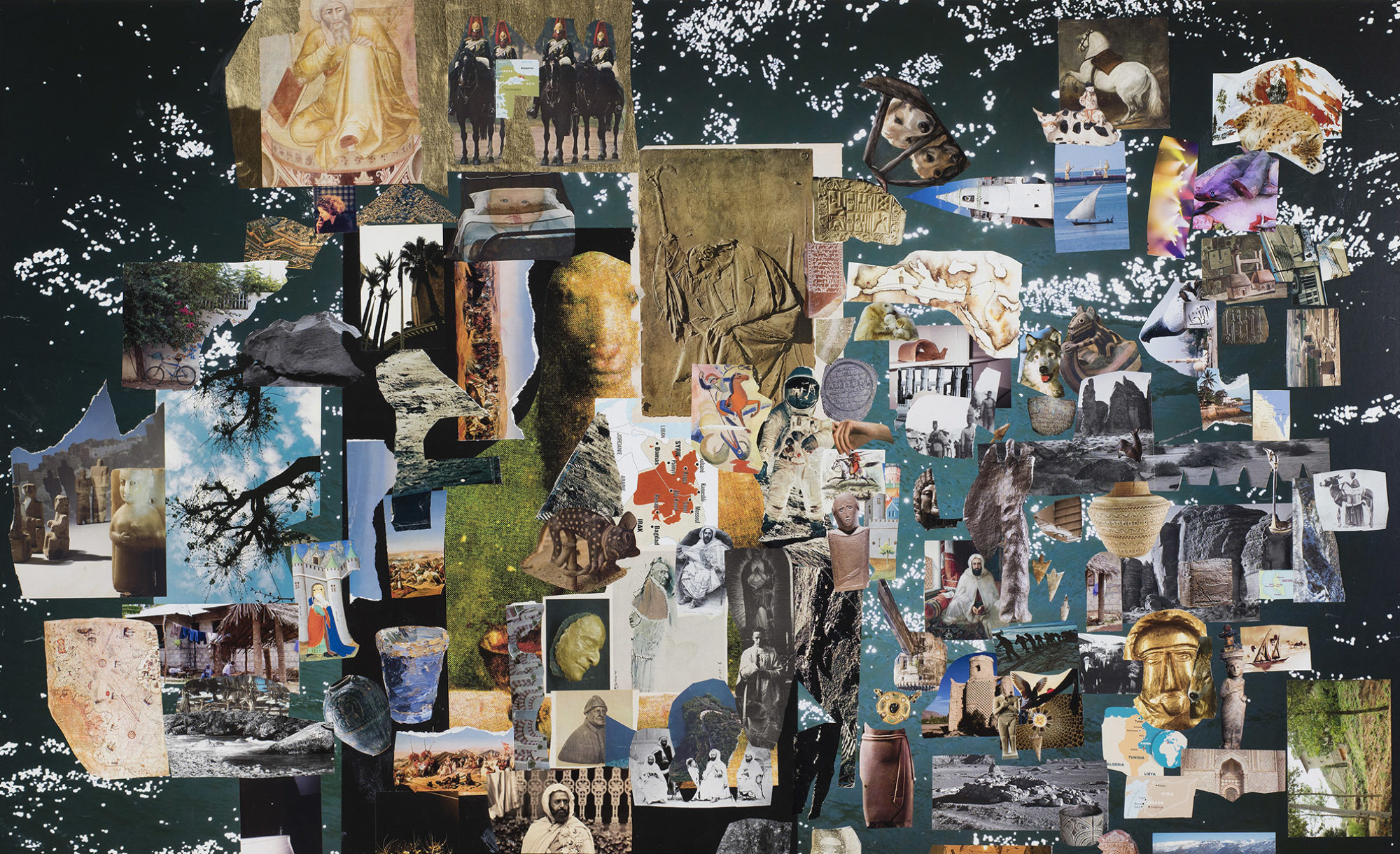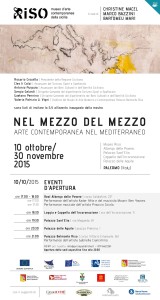Simone Fattal was born in Damascus, grew up in Lebanon, studied in France and made California her home before returning to live and work in Paris. Her practice spans several media but is constantly impregnated with the history of the regions of today’s Arab world, tracing a fine line between genius of forms and poetry of thought. Simone Fattal opened the doors of her studio in Paris to L’Officiel Art to discuss her very latest collage.
L’Officiel Art: Painting in your youth, then literary endeavors, ceramic and clay sculptures, cinema and collages… Your artistic journey has been an exploration of multiple media. From clay to paper, is there a raw material that is common to all your works?
Simon Fattal: The raw material that underpins everything I do is necessity, meaning that I don’t see my life or work as distinct from the political and social context around me. I like to think I show great empathy. To go one step further, I would be tempted to say that I am the raw material of my work, to the extent that I am ingrained in the country that saw me come into the world. Sure, my life has been that of a nomad, but I carry within me the destiny of my country wherever I happen to be. I see no contradiction between painting, film and sculpture. If my painting is generally abstract, my sculptures are mostly characters, which nonetheless tend toward abstraction.
You have lived in Lebanon, the USA and France, entwined in multiple trajectories fractured by trips comings-and-goings and by the departure from Lebanon in 1980 during the civil war. How do these geographical fluctuations impregnate your work?
They are essential. After studying philosophy in France, I returned to Lebanon to found a school to reinvent the education system with the aim of producing new human beings. I was forced to renounce this utopia in the light of the structural impediments of an ungovernable country. It’s clearly apparent today, after years of civil war, that the Lebanese have still not found the common denominator enabling them all to live together. After this failure, I fell back on more personal actions. For a long time, I tried to stay in Lebanon despite the civil war and only left in 1980, five years after war broke out. It took me five years to realize it would be a never-ending war. When I arrived in California, painting seemed a meaningless occupation. I had nothing to say about a landscape that wasn’t mine. It was then that I founded The Post-Apollo Press, which allowed me to find my place and helped my comprehension of my new environment. Even so, I couldn’t live without an artistic activity. I went back to sculpture, a practice begun in the last days of my life in Lebanon. I was already making assemblages, kind of 3D collages. Soon after, almost simultaneously, I started to make collages. Initially, I didn’t take them too seriously. I worked fast, as if in immediate response to reality and political circumstances, as opposed to sculpture, which was a response to the same reality but through a much slower and subtler process.
Like so many tracks, imprints or scars, your collages seem to defy any established order. How does the collage you have chosen to reveal in the pages of L’Officiel Art respond to the idea of dystopia?
For me, the idea of dystopia is to create a world, a virtual place that might promote thought, and that’s what I do with my collages by juxtaposing images from different worlds and periods. For example, images from the mid-19th century, such as the painting that shows the ransacking of Emir Abd el-Kader’s camp in Algeria or the first photo taken in Egypt of the Khedive’s wife, and images from the 20th century, such as the first man in space. I hope that the viewer will establish relations between these images. And all these images are stuck on a base that is the Mediterranean Sea, which is the geographical center of the world for me.
Could you describe the collage, reveal its composition and explain the tensions going through it?
The collage is titled Ils ont trouvé des armes de destruction massive (They have found weapons of mass destruction, 2016), in reference to the arguments that triggered the Iraq War and were later shown to be false. The collage features a photograph I took of a small ceramic that I made at the time, when I was living in Sausalito. It was a little bridge, under which I had laid down three batons of varying sizes. I called the piece Armes de destruction massive (Weapons of Mass Destruction) and exhibited it at an open day in the studio I shared in San Rafael with three female potters. All the visitors exclaimed, “Ah! So that’s where there are! We’ve found those weapons of mass destruction, after all!”
So there is a war aspect to the collage. It also features four horse riders, who seemed very aggressive to me and reminded me of the horsemen of the Apocalypse, which confirmed in my mind the choice of title. Besides these elements, this collage seems to sum up all the other collages I have made, even though it contains elements I never would have thought I’d use, including images of the Pope! I’ve been known to keep images for years before using them. Recently, some pictures of Pope John XXIII, which I found in an old copy of Paris Match, seemed to me to be very important. I sensed that I had to keep them. The Pope had posed for the sculptor Giacomo Manzu, who made wondrous use of the portraits, notably one image, in which it seemed to me that the Pope was weeping over the state of the world. That led to me to include as an accompaniment another religious figure, a Muslim saint, Prince Abd el-Kader, who took up arms out of necessity, even though he was a Sufi, in no way a warrior. And the other images are all interconnected to form a mental geography that fosters reflection or perhaps a kind of reverie. My collages have to be read slowly, just like Persian or Arab miniatures, in which one always picks out details to consider.
Although, at first sight, your sculptures may seem as old as the world, your collages testify to a plentiful multiculturalism that is very modern. What did last year’s installation of these works together, at Galerie Balice-Herling, reveal? Which territory do your collages and sculptures have in common?
My collages and my sculptures come from the same world. My preoccupations in both are the same. They all speak to the history of art, archeology and, simply, history. Whereas the collages talk explicitly about all that, the sculptures keep it within.
Interviewed by William Massey

